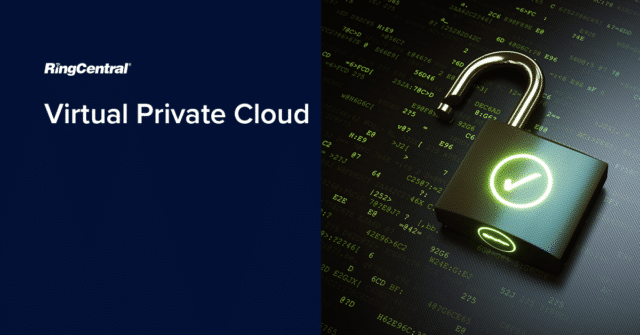When looking for a cloud communications solution, the private cloud environment has been a popular option for enterprises that prefer not to use pooled cloud resources. The possibility they could be sharing data with other companies (maybe even competitors) has made public cloud platforms a no-go area for them.
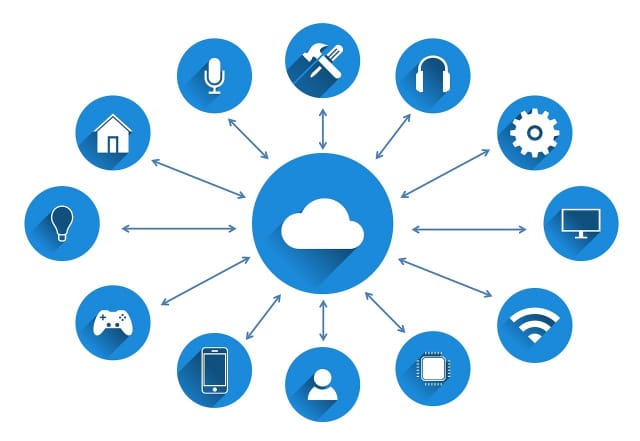
But as time has gone on, many companies have started to realise that a private cloud comes with quite a few downsides. Running a private cloud is expensive and not as scalable as a public cloud – neither does it offer significantly increased security over other cloud solutions.
The virtual private cloud (VPC) model is an on-demand pool of computing resources shared within a public cloud. Part of the public cloud A VPC affords users levels of isolation. These ‘silos in the cloud’ are virtual private clouds where the cloud infrastructure is not shared with other users.
The virtual private cloud market is predicted to reach the US $107.29 billion by 2028. This is not only down to a growing demand for companies to provide an enhanced customer experience (CX), but also companies seeking to decrease their CAPEX and OPEX (capital and operating expenditures).
Moving to a VPC gives companies the opportunity to build a secure environment for mission-critical enterprise cloud applications along with quick-to deploy backup and disaster recovery options. A virtual private cloud also helps to create a robust DevOps and dev-test environment.
What is a virtual private cloud (VPC)?
Put simply, a virtual private cloud (VPC) is a private cloud computing model which is contained within a public cloud. A good analogy could be a restaurant that’s packed with diners and a table has been reserved in that restaurant. This reserved table is like a virtual private cloud within the ‘hosted’ (public) restaurant environment. The table can only be accessed by diners who have made a reservation.
A VPC similarly reserves some of the public cloud’s resources for use by just one customer.
VPCs differ depending on the provider or managed services provider (MSP), but they have several things in common:
- A VPC sets aside logically isolated parts of a public cloud to create a virtual private environment.
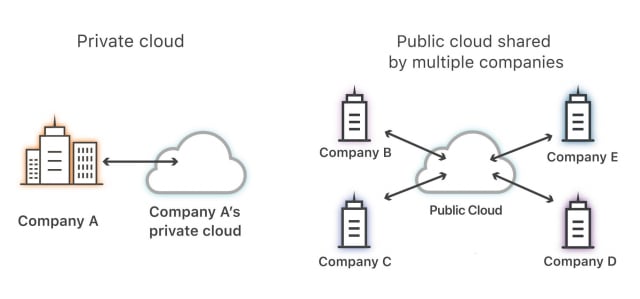
- Processing and data storage systems are not intermingled with other tenants. This is achieved by using physical and virtual mechanisms managed by a cloud computing vendor.
- VPC clients can run code, store data, host websites and do all the things they can do in a private cloud.
- Users get a unique private IP subnet they can use as if the hardware and software are on-premises.
- VPCs use a secure virtual communications network which may or may not have a dedicated circuit to the cloud provider.
- Like all cloud environments, virtual private cloud resources are available on-demand.
What is the difference between virtual private cloud and private cloud?
While they sound similar, it’s important to note that the terms ‘private cloud’ and ‘virtual private cloud’ are not the same. A private cloud is single-tenant – a service exclusively offered to one organisation. A virtual private cloud is a private cloud within a public cloud.
A private cloud runs on dedicated infrastructure which may reside on-premises in a dedicated off-premises data centre – or within a managed cloud vendor. Advantages of a private cloud include control and exclusivity. There are no neighbours to share hosted resources with.
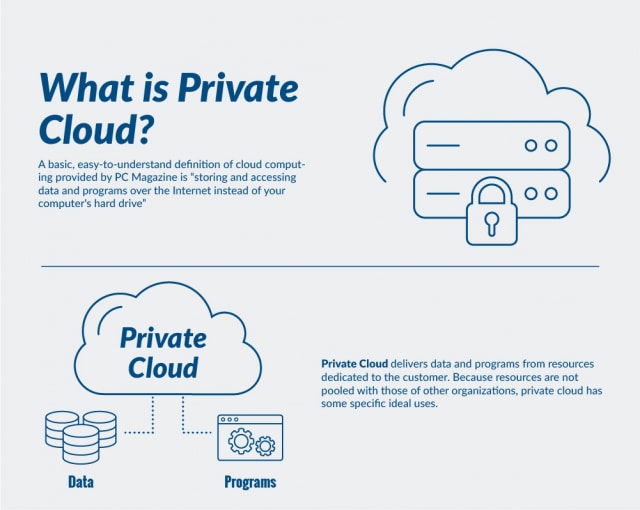
In a traditional on-premises private cloud model, the enterprise’s in-house IT team acts as a service provider, with the individual business units acting as tenants.
With a private cloud, users need to make a significant investment in hardware and software – and space still needs to be rented or bought from cloud service providers. Private clouds also require any number of people to manage them. This makes private clouds relatively expensive to run – and top-level security isn’t guaranteed either.
However, in a VPC model, a public cloud provider takes on the role of the service provider, while the subscribers to the cloud are the tenants. Organisations benefiting most from a VPC are enterprises that require a private cloud environment that’s both secure, yet allows users to retain control.
How does a Virtual Private Cloud Work?
A virtual private cloud (VPC) combines the best of private and public cloud environments together in one model. VPCs function like a private cloud that runs on public or shared architecture.
VPC is most commonly used in the context of cloud ‘infrastructure as a service’ (IaaS) where a provider supplies the underlying public cloud infrastructure while the VPC services provided over this infrastructure could be supplied by different vendors.
In a virtual private cloud arrangement the public cloud infrastructure provider is responsible for ensuring that a private cloud customer’s data is kept distinct from every other customer’s; both in transit and inside the cloud provider’s network. This is achieved by using security policies that require at least some of the following elements:
- Encryption. VPNs (virtual private networks) use encryption to create a private network above the public network. VPN traffic passes through an internet infrastructure that comprises routers and switches etc. that are publicly accessible. The traffic, however, is scrambled and therefore invisible to other users.
- Private IP addresses (subnets). A subnet is a range of IP addresses in a network reserved for a certain user. These private IPs are not accessible via the public internet, unlike usual IP addresses.
- Allocating a unique virtual local area network (VLAN) to each customer. A VLAN is a group of computing devices connected to each other without the use of the internet. A VLAN is a virtual LAN. Like a subnet, a VLAN can partition a network – but this partitioning occurs at a different layer within the Open Systems Interconnection Model (OSI) – at layer two instead of three.
A virtual private cloud user can usually create and manage their own network components including IP addresses, network gateways, access control parameters and subnets.
What are the benefits of Virtual Private Cloud Works?
Having a private cloud model allows enterprises to tap into the benefits of private clouds. For example, companies can gain more granular access to network control. Oranisations can also take advantage of public cloud resources and scale up or down easily. A VPC allows users to keep an area isolated for private workloads – whilst simultaneously being able to take advantage of public cloud resources.
VPCs have all the features you’d expect from a public cloud including:
1. Agility
A VPC gives users full control over the network size along with automation to scale resources up or down whenever required. These resources can be scaled dynamically in real-time.
2. Security
Even though the VPC is part of the public cloud, it is logically isolated so a user’s data and space don’t mix with a cloud provider’s other customers. Users have full control of how resources and workloads are accessed and by whom.
The public cloud providers offering VPCs have more resources than small to medium-sized businesses for updating and maintaining cloud infrastructures. These include the use of firewalls – e.g. the firewall capabilities on AW that addresses specific security needs.
Logical isolation makes the VPC environment more secure, but only if public cloud security is intentionally deployed. Responsibility for cloud security is shared between the cloud provider and the user and users must take steps to secure their data and apps in the cloud.
For example, public cloud environments like Amazon AWS can be secured with third-party apps that are able to detect and manage threats like DDoS attacks automatically.
3. Hybrid clouds are easy to deploy
It’s relatively easy to connect a VPC to a public cloud – or to on-premises cloud architecture via a VPN.
4. Improved performance
Cloud-hosted websites and apps generally perform better than those hosted on on-premises servers.
VPCs enable a hybrid cloud environment where an organisation can use a VPC as an extension of their own data centre, without having to deal with the complexity of building an on-premises private cloud.
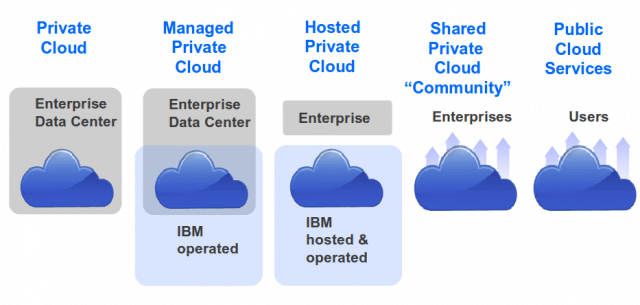
5. Availability
Redundant resources and architectures that are highly fault-tolerant mean that pass and workloads are highly available which means VPC environments can provide close to 100% uptime expectations.
6. Satisfied customers
Today’s ‘always on’ digital business environment means that customers demand uptime ratios of up to 100%. The high availability of VPC models supports reliable online interactions and experiences that build customer trust and loyalty.
7. Increased resources to channel innovation
With reduced costs and fewer demands on the IT team, enterprises can focus on achieving their key business objectives.
The Disadvantages of Virtual Private Cloud Works
While a VPC brings with it a host of benefits, there are some disadvantages.
For example, enterprises may face some complexity in terms of configuration, management and monitoring of their virtual private network (VPN).
VPC generally costs more to operate than standard cloud hosting. It can even be more costly than operating a private, on-premises cloud solution. So it’s essential to weigh up the costs of moving data in and out of a VPC. There are also the private connection costs on an hourly basis, as well as optional extras that can be selected. All these costs add up.
Larger companies may not benefit as much as smaller companies from the large resources of VPC providers – having many resources themselves in terms of updating and maintaining infrastructure. If they face tight data security regulations this can even be disadvantageous.
While VPCs offer users an isolated environment in a public cloud where workloads can run, these workloads are still hosted outside their own data centre. For highly regulated businesses with extensive compliance requirements e.g. financial or healthcare organisations, this can result in limitations on the types of applications and data they can place in a VPC.
Top Virtual Private Cloud Works Providers
Each cloud provider offers different models and some price individual resources, such as load balances or storage, separately. It’s also common for data transfer charges to apply based on volume. Before selecting a provider consider the requirements of the apps you plan to deploy. Do they require large amounts of memory or CPU fpr example? Identifying these aspects can help you determine your usage needs so you can estimate costs.
Once you’ve worked out what you want from a VPC these are some options worth considering:
1. Amazon Virtual Private Cloud (Amazon VPC)
Amazon Virtual Private Cloud enables provision for users to access logically isolated sections of the Amazon Web Services (AWS) cloud. Users can then launch AWS cloud resources in a virtual network.
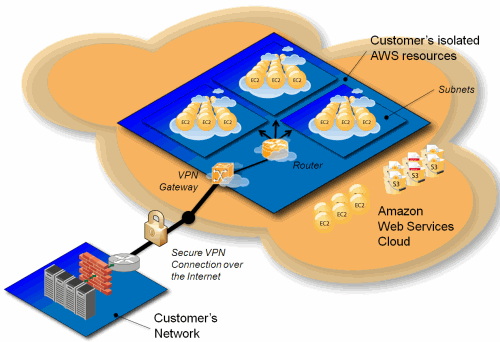
Benefits of AWS virtual private cloud include:
- Amazon Private Cloud offers advanced security features including security groups and network access controls
- AWS Virtual Private Cloud is easy to deploy and manage via the AWS Management Console
- Ability to simplify workload cloud migration with VMware (virtual machines) Cloud on AWS
- Customisable in allowing users to select their own IP address ranges and create subnet as well as configure route tables and network gateways. AWS also accommodates DNS (Domain Name Systems) via a DNS server
- Amazon Private Cloud is charged on an hourly basis
Users retain complete control over their virtual networking environment and functionality, including being able to select their own IP address ranges, create subnets and configure route tables and network gateways. There’s the option to use both IPv4 and iPv6 in a VPC to enable secure easy access to resources and apps.
Amazon VPC networks are easy to configure and create a public-facing subnet for web servers with access to the internet. It’s also possible to put backend systems e.g. databases or application servers in private-facing subnets without access to the internet. There are multiple layers of security and network access control lists making it easy to control access to instances in each subnet.
2. Alibaba Virtual Private Cloud
Alibaba VPC helps users build isolated network environments using Alibaba Cloud. Users can customise their route table, IP address range, network segment and gateway. It’s also possible to connect VPC and an IDC in order to provide access to hybrid cloud services.
Advantages of Alibaba Virtual Private Cloud
- Securely isolated. Alibaba VPC creates isolated network environments based on Alibaba Cloud. This affords Layer 2 logical isolation between differing VPC instances.
- Flexible. SDN configuration enables users to customise the routeing table and IP address range.
- Free. A fully isolated VPC model can be accessed for free on the Alibaba Cloud platform.
- Robust. Copes well with disaster recovery.
- Easy to configure, control and maintain.
- Well-documented information on the internet so users can find self-help information. Users can also take an Alibaba Cloud Certified course to help them plan, configure and manage Alibaba Cloud VPC connection.
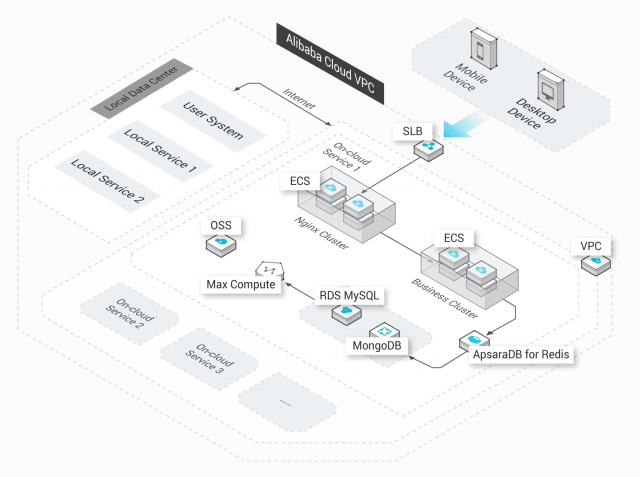
3. IBM Virtual Private Cloud
IBM Virtual Private Cloud is ideal for cloud-native workloads; IBM’s experience in building and maintaining cloud architectures are at its foundation. IBM Cloud VPC features a REST-based API that makes it easier to integrate with a user’s legacy applications and toolsets. This also offers multiple connectivity options and integration with all IBM’s Cloud platform capabilities.
Users can create highly available private virtual networks that are secure as well as take advantage of ‘bring your own IP’.
Advantages of IBM Virtual Private Cloud
- IBM is constantly evolving to keep ahead of competitors
- IBM Virtual Private Cloud is ideal for helping to create hybrid solutions
- Locally isolated VSNs enable enterprises to scale infrastructure resources for agility
- Covers multiple regions for disaster recovery and resilience
- Pay-as-you-go pricing
You can get set up with IBM Virtual Cloud for free and access apps, AI, analytics and other features to build services – or upgrade to access IBM’s full catalogue of products.
4. Google Virtual Private Cloud (VPC)
Google Cloud Platform (GCP) is a suite of cloud computing services that run on Google’s internal infrastructure. Google’s infrastructure as a service (IaaS) offers VPC capabilities.
Resources can be provisioned, connected and isolated in a virtual private cloud across all geographies and regions. Users can connect zones without having to add any network complexity since data is encrypted both when travelling and at rest on Google’s global private network.
Google’s identity management policies and security parameters enable users to access Google’s storage, big data and analytics – as well as managed services – privately.
Benefits of Google VPC
- Free trial
- Flexibility to scale and control how workloads connect both regionally and globally
- Bring your own IP addresses to Google’s network infrastructure anywhere
- Access VPCs with no need to replicate connectivity or management policies in each region
How does RingCentral support Virtual Private Cloud?
For the majority of companies, VPC is the likely option for standard cloud deployment rather than having to build new physical hardware and software – that private clouds require.
VPCs are a ‘best of both worlds’ approach to cloud computing. A virtual private cloud solution is an affordable way to ensure your network infrastructure grows as your business grows.
The virtual private cloud offers companies an opportunity to create better experiences for customers. Another sure-fire way to boost your customer experience (CX) is to adopt a cloud-based telephony system.
RingCentral helps over 350,000 businesses to integrate their communications in the cloud. As a Gartner Magic Quadrant Leader, RingCentral integrates with leading cloud platforms including Amazon AWS so you can be up and running in no time – with employees able to connect with each other and with customers – from any place on any device.
Originally published Dec 10, 2020, updated May 28, 2021

